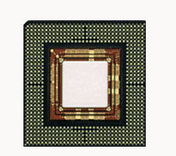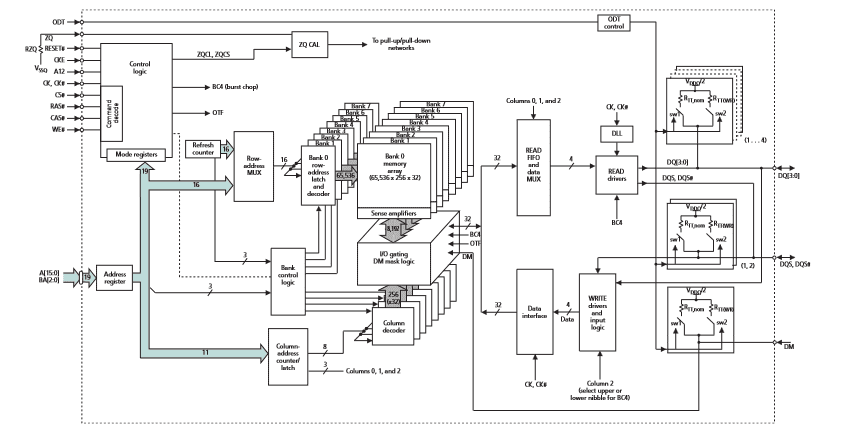Memories are semiconductor devices attached inside a circuit board for the consumer electronics to store information. With several options out there, you want to pick the best out of the rest. We have discovered that DDR3L is a better variant to DDR3 and that the SDRAM memory might just be better than the DRAM.
Now, when you have one memory packing both the DDR3L and the SDRAM, you want to pay attention. And you want to see what the MT41K256M16HA-125 : E 3 has to offer because it combines those two.

What is MT41K256M16HA-125:E 3?
It is a dedicated semiconductor device with a combination of both the DDR3L and the SRAM memory supports. From the information on the datasheet, it can potentially outrival the DDR3 memory, in terms of power consumption, as the MT41K256M16HA-125:E 3 uses a 1.3V design. This makes it the low-voltage version or variant of the typical 1.5V DDR3.
What is DDR3L SDRAM?
It is the variant of the broader DDR3 memory. The DDR3 stands for Double Date Rate 3 Synchronous Dynamic Random-Access Memory (DDR3 SDRAM). The DDR3 SDRAM is a type of Synchronous Dynamic Random-Access Memory (SRAM), which offers flexible memory and storage functions via the high-bandwidth Double Data Rate (DDR) interface.
The addition of the alphabet “L” at the end of the DDR3L means “Low-Voltage” and that shows it is lower-voltage variant of the broader DDR3 SDRAM memory.
What to Expect from MT41K256M16HA-125:E 3?
As a DDR3L SDRAM memory, nothing changes in how MT41K256M16HA-125:E 3 operates because it inherits the typical operations of the DDR3 SDRAM.
In that instance, we are looking at a memory-centric semiconductor device that it has a numerically higher latency, which goes as high as 10 nanoseconds.
One of the most outstanding features is that the MT41K256M16HA-125:E 3 inherits the 8-burst deep prefetch buffer, the enabling technology that makes the data transfer speed awesome. At an estimate, the device can potentially facilitate data transfer at the rate of 800 to 2,133 Megabytes per Second (Mbps).
MT41K256M16HA-125:E 3 Supports Concurrent Operations
Just like the traditional DDR3 SDRAM memory type, MT41K256M16HA-125:E 3 inherits the ability to enable concurrent operations – a way of speeding up the memory process.
The concurrent operation leverages the pipelined and multibank architecture to hide the activation time and the row per-charge. Doing that helps MT41K256M16HA-125:E 3 to provide the highest bandwidths possible.
The MR3 Register is for Data Retention
Retaining data or wireless information may seem a “herculean task” for some memory types – but not for MT41K256M16HA-125:E 3. It is able to retain data because of the dedicated register called the Mode Register 3 or MR3.
How does the MR3 register work? First, let us understand the fundamentals. The major use of the Mode Register 3 (MR3) is to control most of the additional features and functions that weren’t availed in the other mode registers.
In terms of the data retention, the Mode Register 3 (MR3) typically works alongside the LOAD MODE. The relationship between the two is that the MR3 register is programmed via the LOAD MODE command – a model that enables the register to retain or keep a large volume of data.
The retained data remains inside the register until it (the register) is programmed again. The data will also remain in the register, except if the target device is shut down either because of the disconnection from a power source or because of the drained power from the time of last recharge.
Important Considerations for Data Retention
For data to be retained in the MR3 register, the process has to be followed to the latter. In this case, the retention process has to start from the point of configuration, where the MR3 must be loaded after the following conditions are in place:
- No data bursts are in progress.
- The banks must be idle before the MR3 register is loaded.
Additional Features

Below are some of the additional features making up the MT41K256M16HA-125:E 3 DDR3L SDRAM:
- Output driver calibration
- 8 internal banks
- Write leveling
- MT41K256M16HA-125:E 3 has a multipurpose register
- It supports both the Automatic Self Refresh (ASR) and the Self Refresh Temperature (SRT).
The Differences between DDR3L and DDR3
Now that we have ascertained how the MT41K256M16HA-125:E 3 memory works, let us now establish the differences between its DDR3L SDRAM and the standard DDR3 SDRAM.
1. The Difference is in the Voltage Specifications
Voltage has to do with the operating capacity of a consumer electronic – and it typically stems from the components in the internal circuit.
The first difference between the DDR3L SDRAM and the DDR3 SDRAM is that the former uses a lower voltage, which is about 1.3 Volts, while the latter uses a higher voltage, rated at 1.5 Volts.
Therefore, on the premise of low-voltage usage, it is typical to use the MT41K256M16HA-125:E 3 and indeed, other DDR3L SDRAMs for power-centric devices. That is why this type of memory is commonly used with the mobile devices, requiring longer battery life.
The most significant low-voltage process of MT41K256M16HA-125:E 3’s DDR3L SDRAM is that it generates less heat and consumers only a little power. These two factors go further to enhance the memory’s lower-power consumption.
2. The Cost-Factor Plays Out
As to be expected, the cost of buying a memory tends to influence the buyers’ decision. Depending on the applications/use case and the budget, the consumers may want to go for something cheaper.
If that were to be the case, the DDR3 SDRAM ticks the boxes because it is cheaper. Perhaps, the reduced power usage might not be cost-effective after all, because the DDR3L SDRAM costs more.
3. The Use Cases Also Differ
Where the DDR3 SDRAM is used is not as much as where the DDR3L SDRAM is used. For example, the former is commonly used with servers, Personal Computers (PCs) and laptops, while the latter is used with embedded systems/circuits, laptops and mobile devices.
Final Words
While the cost of purchasing the MT41K256M16HA-125:E 3 may be a bit pricey, it does make up for that with the improved performances, ranging from multiple operating temperatures (covering industrial, commercial and automotive applications); backward-compatibility in the 1.5V applications and an 8n-bit prefetch architecture.


